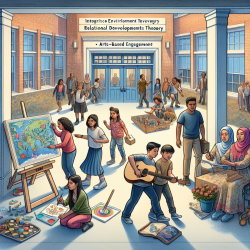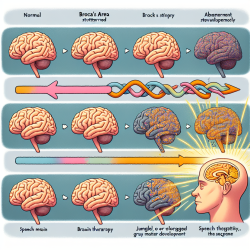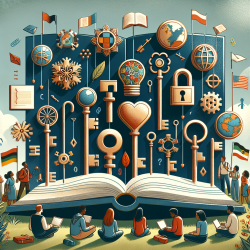Introduction
As a Special Education Director, you are likely familiar with the unique challenges faced by newcomer youth in our schools. The research article titled “You Can Do So Much Better Than What They Expect”: An Arts-Based Engagement Ethnography on School Integration With Newcomer Youth provides valuable insights into how we can better support these students. This blog post will explore the key findings of the study and offer practical strategies for educators to enhance their skills and improve the integration experiences of newcomer adolescents.
Understanding the Research
The study employed an arts-based engagement ethnography to delve into the school integration experiences of newcomer adolescents. The researchers identified five key structures influencing positive integration:
- Barriers to advancement at individual, school, and macro levels
- Fluctuating relationship with cultural identity
- Limited trust in systems
- Resilience through independent learning
- Facilitating factors to positive integration experiences at the family and school level
Barriers to Advancement
Newcomer youth often face systemic and socioeconomic barriers, language challenges, and curriculum rigidity. Educators can address these by ensuring access to necessary resources, providing language support, and adapting curricula to meet diverse needs. Schools should consider flexible approaches to accommodate the unique backgrounds of these students.
Building Cultural Identity
Newcomer students navigate complex relationships with their cultural identities. Educators can support this by fostering an inclusive environment that celebrates diversity and encourages students to share their cultural backgrounds. This can be achieved through culturally responsive teaching practices and school-wide initiatives that promote cultural awareness.
Trust and Resilience
Limited trust in school systems can hinder integration. Educators should work to build trust by demonstrating empathy, understanding, and support. Encouraging resilience through independent learning is crucial. Schools can provide safe spaces for students to explore their identities and develop their strengths.
Facilitating Positive Experiences
Positive role models, familial support, and meaningful school engagement are critical to successful integration. Educators can facilitate this by creating mentorship programs, involving families in the educational process, and offering extracurricular activities that align with students' interests and values.
Conclusion
The findings from this study provide a roadmap for educators to enhance their practices and support newcomer youth more effectively. By addressing barriers, fostering cultural identity, building trust, and facilitating positive experiences, we can create a more inclusive and supportive environment for all students.
To read the original research paper, please follow this link: “You Can Do So Much Better Than What They Expect”: An Arts-Based Engagement Ethnography on School Integration With Newcomer Youth.










